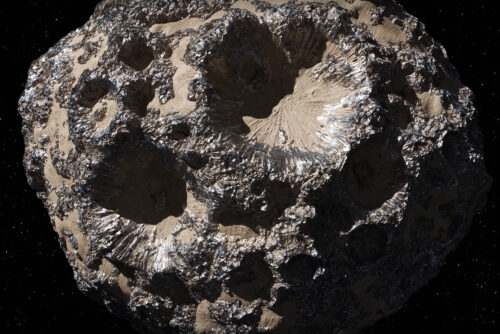
In a groundbreaking revelation, NASA’s Hubble Telescope has captured images of an extraordinary asteroid with a value so astronomical that it dwarfs the entire global economy.
Dubbed “16 Psyche,” this colossal celestial body in the Solar System’s main asteroid belt holds an estimated worth of $10,000 quadrillion, a staggering sum when compared to the $142 trillion global economy in 2019.
This article delves into the remarkable characteristics of 16 Psyche, its composition primarily consisting of iron and nickel, and NASA’s plans to explore this enigmatic asteroid.
16 Psyche, measuring a colossal 226 kilometers (140 miles) in diameter, lies in the region between Mars and Jupiter, approximately 370 million kilometers (230 million miles) from Earth.
Although initially discovered in 1852, the recent Hubble observations provide scientists with the first detailed insights into this extraordinary celestial body.
The exceptional quality of 16 Psyche arises from its composition, which predominantly comprises iron and nickel, as highlighted in a study published in The Planetary Science Journal.
According to Tracy Becker, a planetary scientist and the paper’s author, 16 Psyche is speculated to be the remnants of a planet’s core that failed to fully form due to catastrophic collisions with other celestial objects.
These collisions led to the loss of its mantle and crust, leaving behind a unique heavy-metal asteroid.

The opportunity to study 16 Psyche up close holds immense significance in unraveling the mysteries of planet formation and gaining insights into the internal composition of planets.
Recognizing the scientific value of 16 Psyche, NASA has included it in its Discovery Program.
An orbiter is scheduled to launch from Florida’s Kennedy Space Center in August 2022, with the mission aiming to reach 16 Psyche in January 2026.
The spacecraft will spend at least 21 months meticulously mapping and studying the asteroid’s distinctive properties.
This ambitious endeavor will allow scientists to gain an unprecedented understanding of the asteroid’s composition and potentially provide insights into the core of a planet.
Tracy Becker, eager to uncover the truth about 16 Psyche, expresses fascination with the mission’s potential to reveal the inner workings of a planet.

The opportunity to explore the asteroid up close presents an unprecedented chance to comprehend the intricacies of planetary structures.
Becker, affiliated with the Southwest Research Institute in San Antonio, Texas, anticipates that the findings may challenge existing assumptions and reshape our understanding of planetary formation.
If the mission were to successfully return 16 Psyche to Earth, the precious metals contained within the asteroid could potentially revolutionize the global economy.
With the current value of metals, every individual on the planet’s population of 7.8 billion would receive an estimated windfall of approximately $1.2 billion.
Although this scenario remains hypothetical, it underscores the incomprehensible wealth encapsulated within this rare metal asteroid.
The discovery of 16 Psyche, a rare metal asteroid with a value surpassing the global economy, has ignited excitement within the scientific community.
NASA’s upcoming mission to explore this celestial body presents an opportunity to unravel the mysteries of planet formation and gain insights into the internal structure of planets.
While the economic implications of the asteroid’s precious metals remain speculative, the scientific knowledge to be gained from studying 16 Psyche is undoubtedly invaluable, promising to reshape our understanding of the universe.
